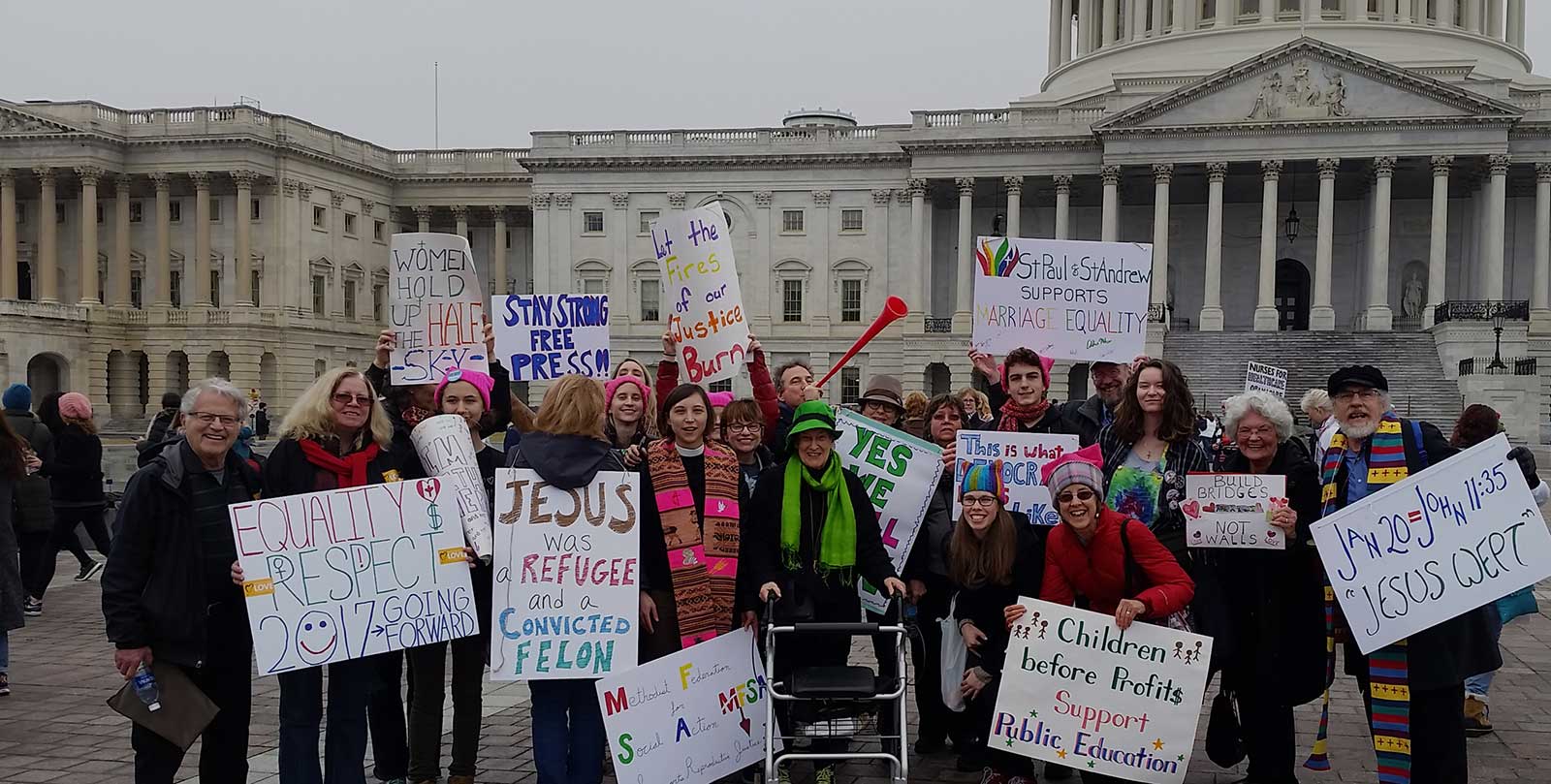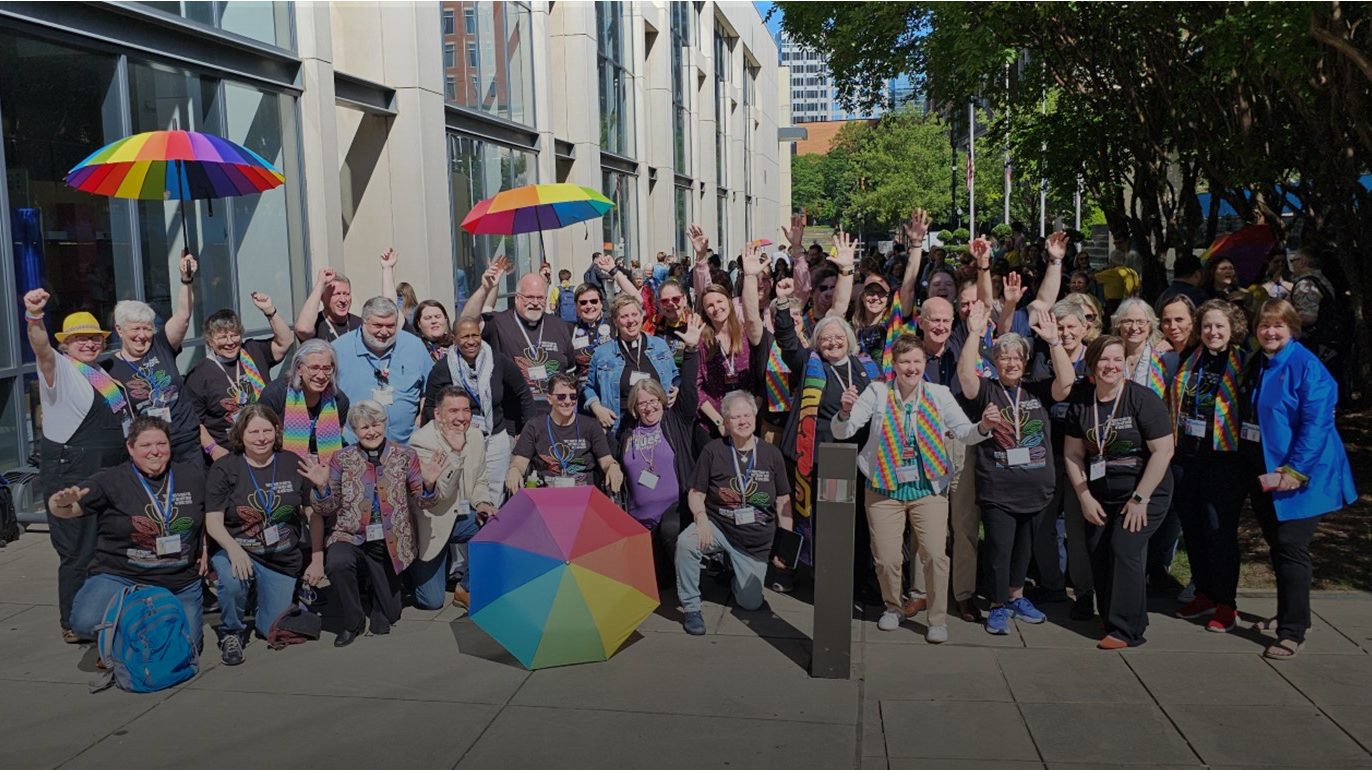Our History
“Seek the peace and prosperity of the city to which I have carried you into exile. Pray to the Lord for it, because if it prospers, you too will prosper.” – Jeremiah 29:7
Second Wesleyan Chapel founded on Manhattan’s Lower East Side
St. Paul Methodist Church is completed at 86th and West End Avenue
St. Paul Methodist Church and St. Andrew Methodist Church merge to become the Church of St. Paul & St. Andrew.
St. Paul & St. Andrew launches it’s first Spanish-language ministry.
St. Paul & St. Andrew founds the West Side Campaign Against Hunger.
St. Paul & St. Andrew and Congregation B’nai Jeshurun begin a decades-long interfaith partnership.
St. Paul & St. Andrew becomes a ‘reconciling congregation’, welcoming and affirming LGBTQ+ individuals into the full life of the church.
St. Paul & St. Andrew completes a major renovation of the West End Theatre.
St. Paul & St. Andrew offers sanctuary to a Central American family facing the threat of deportation.
Two dozen members of the St. Paul & St. Andrew community lead a shutdown of the United Methodist Church General Conference in protest of new anti-queer legislation.
St. Paul & St. Andrew moves to online worship and programming as a response to the COVID-19 pandemic and the sanctuary becomes an emergency food warehouse.
St. Paul & St. Andrew returns to in person worship, but retains an option for online worship and small group programming, becoming an international congregation.
St. Paul & St. Andrew launches a “Miracle Mondays” resource fair in response to a major new wave of immigration.
St. Paul & St. Andrew is selected as a National Fund for Sacred Places grantee.

The History of our Church
Read the History of our Progressive Church on the Upper West Side.
The congregation of St. Paul & St. Andrew has roots dating back to 1834 with the founding of the Second Wesleyan Chapel on Mulberry Street between Houston and Bleecker on Manhattan's Lower East Side. Its name and location changed and membership fluctuated between 1834 and 1897 in response to evolving economic conditions, city-wide population shifts, and congregational disagreements. At the time of the completion of the existing Robert H. Robertson designed church building at the corner of West End Avenue and 86th Street in 1897, the congregation was known as St. Paul’s Methodist Church. In 1937, a merger with neighboring St. Andrew’s Methodist Church, then located on 76th Street between Columbus and Amsterdam Avenues, resulted in the formation of the congregation still known today as the Church of St. Paul & St. Andrew.
During the 1930’s and 1940’s, the 1,200 seat sanctuary filled with Methodists and the church services became known for their paid vocal quartet, which at one point included famed Metropolitan Opera soprano Eleanor Steber. In 1947, an article in The New York Times reported that 150 young people attended a meeting of the church’s 20-30 Club. However, by the 1960s, the flight of families to the suburbs began to decimate the Church’s membership. Confronted with a changing neighborhood and a recommendation from its denomination to shutter, St. Paul & St. Andrew’s few dozen remaining congregants chose instead to turn outward to meet the needs of the neighborhood they called home, to seek the peace and prosperity of the city. This ethos of looking outward and responding to community needs has served as the foundation of the congregation’s rebirth and continues to shape our thriving community nearly 50 years later.
This ethos of looking outward and responding to community needs has served as the foundation of the congregation’s rebirth and continues to shape our thriving community nearly 50 years later.
Indeed, the members in the 1970s initiated many social outreach programs that continue to tie the church to the community today. The West Side Campaign Against Hunger (WSCAH), started out of a third floor church cupboard, now serves more than 10,000 families each month. During the Covid-19 pandemic, as church life rapidly pivoted to online worship and virtual small group meetings, the building’s sanctuary famously filled with food to meet the dramatic increase in emergency food distributed through WSCAH. Over the years the church has been a home to a senior center and meals on wheels program, a homeless shelter, a neighborhood tutoring program, twelve-step programs, pre-school and after-school programs, dozens of theater groups and musical ensembles, interfaith programs, a host site for community board meetings and an election polling location.
St. Paul and St. andrew has maintained a long-term commitment to New York’s immigrant population. In 1963 the church launched its first Spanish-language ministry and continues a dual language Sunday School program and a weekly Homework Help tutoring program primarily serving children from Spanish-dominant households. In 2018, the church made national and international headlines by offering sanctuary for over a year to a Central American family in threat of deportation.
In response to a major new wave of immigration in 2022, in coordination with NYC immigrant rights groups, the church inaugurated a ‘Miracle Mondays’ resource fair, welcoming hundreds of refugees and asylum-seekers and their families into our sanctuary each week and providing a full array of food, clothing, essential goods, legal services, and referrals for health care and and other benefits.

In the years since it began looking outward to its surrounding neighborhood, St. Paul & St. Andrew has also worked to nurture interfaith and ecumenical relationships, first developing close ties to one of its neighborhood synagogues, Congregation Rodeph Shalom and other churches and synagogues in the creation of the West Side Campaign Against Hunger. In late 1990, St. Paul & St. Andrew and Congregation B’nai Jeshurun, on West 88th Street, began a decades-long partnership in the work of mutual understanding, collaborative service, and progressive social justice. In August 1991, when B’nai Jeshurun’s roof fell in, the two congregations began sharing St. Paul & St. Andrew’s sanctuary and the synagogue continues to hold High Holy Day services and other events at the church. In recent years, the church has also shared space at various times with the Ethiopian Evangelical Church, Iglesia Cristo Vivo, Rivers of Living Water, Broadway United Church of Christ, Grace United Methodist Church, West Park Presbyterian Church, La Iglesia del Pueblo, among others. These relationships have enriched St. Paul & St. Andrew. As the sanctuary banner–made collaboratively by the church and synagogue choirs–declares, "How good it is when brothers and sisters dwell together in harmony." (Psalm 133)

Active involvement in the arts has been another key component of St. Paul & St. Andrew’s community engagement. In 1999, a major renovation of the church’s ‘West End Theatre’ increased the church’s support of the performing arts. The Theatre has launched various productions, including Bubbling Brown Sugar (1975) which went to Broadway, and The Laramie Project in 2000. The church itself sponsored two impactful productions, ‘In Our Own Words’ (in the wake of the shared experience of the 9/11 attacks), and, in collaboration with other faith groups, ‘Same Difference’ (an interfaith response to those attacks). In addition, many films and TV shows have been filmed in the church, such as Awakenings (1990), Keeping the Faith (1999), and Spoiler Alert (2022). Today, our ‘West End Theatre’ is managed by Bedlam Theatre Company. Furthermore, necessary repairs to the sanctuary following the pandemic yielded dividends in the form of increased suitability for concerts and large orchestra performances, including partnerships with Carnegie Hall and Broadway Inspirational Voices.
Since the 1990’s, St. Paul & St. Andrew has also played a leading role in a variety of social-justice advocacy movements. For example, a welcoming stance towards those of other faith and spiritual traditions was accompanied by a move to be more welcoming to and affirming of LGBTQ+ folks, in the face of denomination-wide bigotry. In 1991, St Paul & St. Andrew became a ‘reconciling congregation’, an early member of what soon became the Reconciling Ministries Network (RMN) of the United Methodist Church. During the 2019 General Conference in St Louis, two dozen members of the church led a shutdown of the Conference, in protest of new anti-queer legislation. After a decades long struggle, the historic 2024 General Conference, with St. Paul & St. Andrew clergy and laity present, removed all prohibitions against ministry with and by our queer siblings.
For over forty years St. Paul and St. Andrew has prioritized mentoring the next generation of progressive Christian leaders.
For over forty years St. Paul and St. Andrew has prioritized mentoring the next generation of progressive Christian leaders. Today, clergy, seminary students, and lay people nurtured by the St. Paul & St. Andrew congregation serve churches and communities across the United States and around the world. Throughout our history, St. Paul & St. Andrew has sought to follow the movement of the Holy Spirit as God calls each generation to seek the welfare of the city and the world.
An openness to change and a willingness to explore new ideas and new ways of being the church characterize the congregation. As a recent play written about the church and premiered in The West End Theater suggested, we see ourselves as “The Church of ‘Why Not?” Building on our vibrant congregation, rooted in our surrounding community, and trusting in the power of the Holy Spirit, we have faith that St. Paul and St. Andrew will meet the challenges ahead. Why not? We are excited to see what new possibilities open before us as we move into the future.



